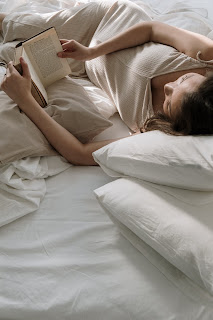You’ll likely suffer information overload when trying to research bed sheet materials. We suggest having priorities, so rank which of breathability, color, feel, and durability is the most important for you.
BUYING GUIDE
With your priority, Basta sa Bahay suggests the chronological order to decide based on 1) material, 2) weight/thread count, and then 3) weave and other preparations. This is because material will often hit many of these decision-making factors already. In this post, we’ll present based on priority so that it’s easier to follow, and then get into details for each of the levers.
- WANT Breathable-cool sheets: Linen or Bamboo Sheets
- WANT warm sheets: Linen or Polyester Cotton Blends
- WANT Bright colors: Polyester Cotton Blends
- WANT Soft: Bamboo, Cotton, and Linen (after time)
- WANT Silky: Silk, or Cotton with weaves like Sateen
- WANT Durable: Linen, Polyester Cotton Blends, or in general: High Thread Count
- WANT Cheapest: Polyester Blends
Material: I refer to your sheets being either cotton, bamboo, linen, or polyester. You’ll run into percents here, as in cotton-polyester blends. For us, this is the most important lever because the material will often affect breathability, color, feel and durability at the same time.
- Cotton: This is the most common, and it’s one of the most widely used, so unfortunately you can get really bad and really good cotton sheets. For the most part, as a natural material, it’s soft and generally breathable. It’s a thin thread and this has two effects, and you can see this comparing it with, for example, linen. First, given the same thread count as linen, it’s less durable because it’s thinner. But, on the durability issue, that’s not to say it isn’t: it’s still one of the more durable materials for sheets. Second, and as an offshoot of the first, there’s a breathability game, as in the case where you compare linen at a low thread count and cotton at a high thread count so you have the same durability. And when thread count increases for cotton, it generally becomes less breathable. So in this comparison, linen is more breathable. However, cotton at low thread counts is pretty breathable and cool.
- Bamboo: The big distinguishing factor about bamboo is that it’s a bit more durable than for example cotton while still being slender. It has something to do with how threads can be harvested as longer continuous ones, which gives it a bit more durability. This has effects on breathability because in a lot of cases, to get the same durability, bamboo will need a smaller thread count than cotton, and it will be more breathable. This material is also softer than cotton in a lot cases (we need this caveat because of the many ways cotton is prepared, some of which can make it very soft).
- Linen: Linen is a thick-thread natural material (from the flax plant) very common in western countries for their textiles. Because threads are thick, they are more durable and heavier at the same thread count as other fabrics. You’ll also add that linen absorbs moisture while being breathable, and this makes it warm during cold weather, and cool during hot weather. The biggest downside of linen is of course its price.
- Polyester: As a man-made material, polyester has the following advantages: it’s cheaper, more durable and keeps color better. It’s other characteristic, that it’s less breathable, make it better at keeping you warm.
Thread Count: This is a characteristic of bed sheets because sheets can be manufactured with more or less threads per unit area. It can mostly serve two functions. First, it increases durability, just think of there being more material to share the stress of use. Second, it can be used to make a sheet softer, or give it a squishiness. With weave type, it can make a sheet more breathable or give it a silky feel. In general however, a simple increase in thread count, which makes it heavier and dense, tends to make a fabric less breathable. So as to whether a high head count is good or bad is not a simple thing to answer. There is a general rule that 1000 and above headcounts are excessive and no longer add to a sheet. In some cases, some sheets have higher headcount to make up for a less durable material, while sometimes, it's to make a sheet softer. It's best to feel and test these sheets in person.
Weave and other Preparations: Finally, sheets can be woven and prepared in several ways. Sateen (not to be confused with the material Satin) for example, is a type of weave that gives it a silky feel. Percale is another weave that makes the sheet more durable and often cooler. Combed cotton is a preparation of sheets with cotton material that basically removes short protruding fibers. Again, it's best to research the preparation as sheets will often state the preparation anyway.

